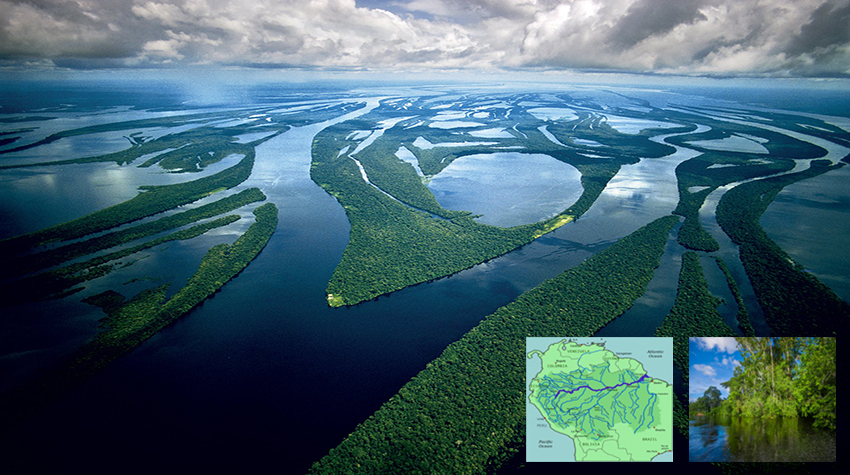The Amazon River and its thousand tributaries make up the largest and most powerful watershed on the planet. Thanks to this enormous expanse of waters, wetlands and marshes, the Amazon rainforest, called the lung of the world, was developed over millions of years. This wonderful system is rich in biodiversity, with millions of lives of all shapes, sizes, colors and possible locomotion. The Amazonas system is an authentic cloud factory that not only irrigate the rainforest itself but the entire Andean mountain range, the Argentine pampas and number of distant areas, thanks to the extensive vegetation and the force and speed of the winds.
Data from the Amazon River
It is the longest and mightiest river in the world
It has seven thousand kilometers in length
Its width is between 1.6 and 10 km
In rainy seasons up to 48 km +
It has between 15 to 20% of the world’s fresh water
The Amazon delta is 240 km wide
In the Amazon, more than 1000 rivers converge
25 of them exceed 1000 km in length
For the most part the slope is extremely low.
Between Iquitos and the delta (3646 km) it just drops 10.6 cm. Due to this in this long stretch the river is very slow and abundant in curvatures.
The drought, the great challenge
NASA has revealed a generalized reduction in the greenery of the Amazon forests that surpasses 1.5 million square kilometers.
The desertification and drying of the tributaries of the Amazon River go hand in hand. They represent one of the greatest challenges that humanity will have to face from now on. Desertification, shortage of water, disappearance of humidity from the rainforest and its surroundings, the loss of crops and consequent famines are as important and dangerous issues as the melting of glaciers and the rise in the level of the seas.
Causes and consequences of the drought
The felling of trees to satisfy the logging markets, plantings of oil of soya and oil palm, extensive agriculture, cattle farm, oil exploitation, pipelines, gas pipelines, construction of highways and roads towards new exploitation spaces, hydroelectric dams and the urbanization. All this affects the Amazon and decreases the flow of water from its rivers, affecting the ecosystems of the greatest biodiversity in the world, with incalculable consequences.
If the deforestation of the forest does not stop, the global drought would be unstoppable and will knock on our doors before the thaw itself does. As climate change increases, El Niño events will be more frequent, so the Amazon Basin will lose its capacity to recover between these events.
Sandor Alejandro Gerendas-Kiss







Leave A Comment